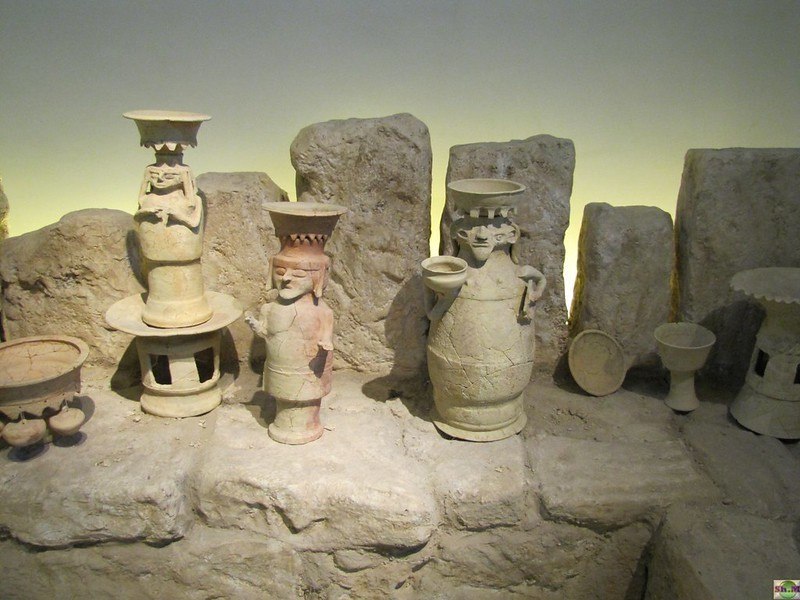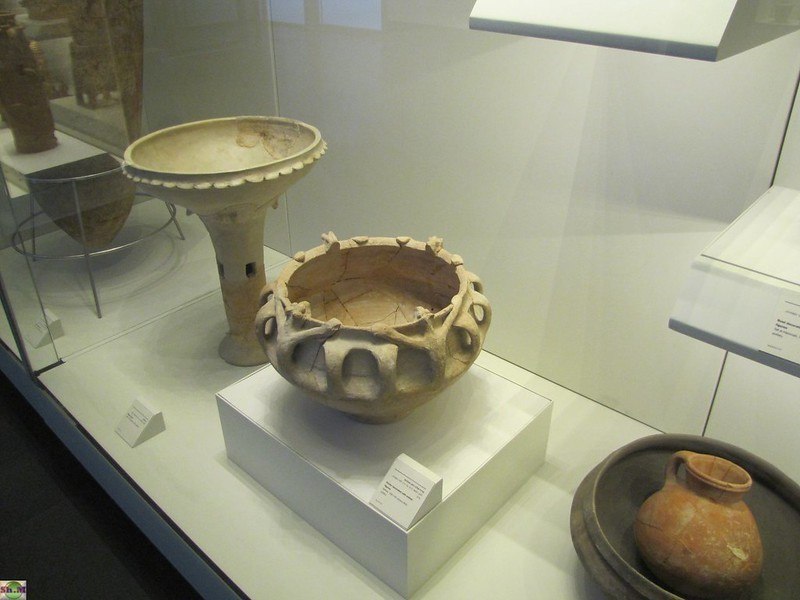
The key to understanding and mastering the traditional Passover greeting begins with grasping the historical and spiritual meaning behind the celebration. Over three thousand years ago, the Lord delivered His people, the Israelites, from captivity under the Egyptians. The Lord sent the ten plagues upon the Egyptians to force Pharaoh to free them but spared His people from the disasters. After the Israelites were freed from slavery, the Lord commanded them to observe and celebrate the Passover once a year in remembrance of their deliverance.
History of the Passover
The Passover itself is the festival that the Lord commanded his people to celebrate to commemorate their deliverance from the hands of the Egyptians. After Joseph and his family passed away and were buried in Egypt, their children multiplied greatly, and within a few generations, there were thousands of Israelites living in the land. The Pharaoh of Joseph’s time had died, and his successors were afraid of the growing number of foreigners living among them. They feared that if the Israelite numbers grew too large, it would make the Jews want to revolt, and they might not be able to stop them. It is because of their fear that a new pharaoh enslaved the Israelites and forced them into hard labor to keep them from revolting and taking over the land.
This slavery lasted over two hundred years until God decided to send Moses as His messenger to lead them to the land promised to Abraham.
During the Israelites captivity in Egypt in the thirteenth century, the Lord chose Moses to lead His people out of their bondage. Moses and his brother Aaron went to Egypt to demand that the Pharaoh – most scholars agree that the Pharaoh would have been either Ramses II or Ahmose I – release the Israelites so that they could travel to the promised land to serve their God.
The Pharaoh refused to release them, and in retaliation, the Lord sent the ten plagues upon the land, each plague used to mock a specific Egyptian deity and prove the power and supremacy of the Israelites god. Even after nine devastating plagues, the Pharaoh still refused to allow the Israelites to leave and made their work and lives even harder.
God told Moses to give His people specific instructions to follow that would protect them from the final and most terrible plague. The people were instructed to kill a perfect lamb and smear its blood on the doorpost of their homes, cook a meal of lamb meat, bake bread without leaven, and prepare themselves to leave at a moment’s notice.
During the night, all the firstborn sons of every household, including the Pharaoh’s, were killed, but any house that had the lamb’s blood smeared on the doorway was spared the tragedy. In the morning after the devastation, the Pharaoh called Moses and Aaron to his palace and demanded that all the Israelites leave immediately.
After leaving Egypt and escaping Pharaoh and his army, God commanded His people to remember their salvation from slavery by celebrating the Passover. This new festival would be celebrated once a year for 7 days in remembrance of their freedom and how the Lord allowed death to “pass over” their homes. The Passover is and has been one of the most important Jewish festivals and is observed by Jews across the world to this day.
The Passover Celebration Itself
The Passover is first mentioned in the Torah and more exactly Exodus 12:23 and though there has been some debate concerning the exact meaning of the wording used in the Torah most believe that it refers to the “passing over” or “skipping” of the Israelite houses during the night of the tenth plague.

Passover begins on the fifteenth day of Nisan and lasts seven days with the first two days and the last two days being especially important holidays. Prior to the fifteenth day, there are many rituals held on the fourteenth including the fast of the firstborn, removing all leaven from the home and searching for it, many prayers and services, and the Passover Seder, where the family gathers to eat a symbolic meal and retell the story of the Passover as shown in the Haggadah.
During the week of Passover, no work may be done, and many of the same rules for the Shabbat ( Sabbath) are applied. Jews are supposed to take these days off to spend time with their families, enjoying each other’s company, and remembering their ancestors’ deliverance from slavery.
On the final day of Passover, called Shvi’i shel Pesach or “seventh day of Passover,” there are many more services, and prayers held to commemorate the day the Israelites reached the Red Sea.
Throughout the entire week of Passover, Jews across the globe spend time in prayer and worship while remembering their ancestors’ suffering under the hands of the Egyptians and their deliverance. Passover is meant to be a reminder of the Lord’s sovereignty and justice and is a joyous reminder of how He looked after His people even in their greatest time of need.
The Significance of the Traditional Passover Greeting
The Passover itself is one of the most significant feasts or celebrations held in the Jewish faith. It is present to remind the Lord’s people of their deliverance from the hands of the Egyptians and how the Lord protected them during the ten plagues. Therefore, the rituals and practices held concerning this holiday are just as important as the story behind it.
One of the most important aspects of the holiday is to take time off from the normality of everyday work and activities to focus on spending time in devotion to the Lord and with the family. Much of the Passover is focused on tradition and rituals, so understanding the proper greeting is a necessity. Mastering the traditional Passover greeting gives the entire celebration a deeper meaning in one’s life and helps connect believers to each other while remembering the events from the past that shaped a nation and a religion.
Greeting in Biblical Hebrew
Spoken by the Israelites between the Mediterranean Sea and the Jordan River, Biblical Hebrew is an archaic form of Hebrew and is also considered to be the Classical form of the language. This form of Hebrew was spoken from about the tenth century BCE until after the siege of Jerusalem by the Romans in seventy AD.
[If you are interested in learning Biblical Hebrew, read here my article on this topic.]
After the siege and destruction of the temple, a great amount of chaos caused the language to take several different forms, including the main dialect of Mishnaic Hebrew. During its lifetime, the language utilized many differing alphabets, including the Samarian and Aramaic alphabet.
Even though Biblical or Classical Hebrew is no longer the common dialect, many Jews still utilize some of the vocabularies when it comes to rituals and the Passover. Traditional Passover greeting is still important in their lives.
“Chag sameach”
Used traditionally as a Hebrew expression literally meaning “happy holiday,” Chag sameach can be used for any holiday and not just the Passover.
“Chag aviv sameach”
Like the first expression, Chag aviv sameach means “Have a happy spring holiday,” however, this time, it refers to the Passover instead of being used as a general statement.
“Moadim l’ simchah”
Only used during the intermediate days of Passover, or the Chol Hamoed, it means “May your times be joyous!”.
“Chag Pesach kasher vesame’ ach”
Used as an expression, Chag Peacach kasher vesame’ ache means “kosher and joyous Passover.”
Traditional Passover Greeting in Modern Hebrew
After centuries of devastation, war, genocide, and the scattering of the Jewish people, Hebrew has somehow survived the test of time but did experience a few dialect changes. Now it is the official spoken and written language of Israel. There are over nine million people around the world who speak Hebrew, and about five million of them are native speakers.
[Follow this link to know more on how to learn Modern Hebrew.]
What we now consider to be Modern Hebrew, more commonly referred to as simply Hebrew, has been identified as the ancient native language of the Israelites known as Biblical Hebrew, which was commonly used until roughly the third century BCE. Mishnaic Hebrew, the language that both the Mishnah and the Talmud are written in, is found primarily during the first through fourth centuries during the Roman occupation of Israel and following the destruction of the temple in seventy CE.
Mishnaic Hebrew was heavily influenced by Aramaic but soon lost momentum and was scarcely used in the following centuries. Being passed down from generation to generation in Jewish households and in manuscripts, Hebrew managed to survive the test of time and eventually made its way back into prevalence after the formation of the modern state of Israel.
This is the most common form of Hebrew that is used today and has become much more prevalent with the growth of the state of Israel. Many modern Jews have learned this form of Hebrew, and some speak it in their households and on the Sabbath.
In Modern Hebrew, there are many ways to wish would greet someone during the Passover. Some have different meanings, but others are simple variations of one another. Because Modern Hebrew comes from the original Biblical Hebrew, many of the expressions and greetings are the same and are pronounced the same as well.
Greeting in Yiddish

After the siege of Jerusalem and the collapse of the Roman Empire, much of the Jewish population was scattered across the globe, and Hebrew began to morph drastically. Originating in Central Europe during the ninth century, Yiddish utilizes the Hebrew alphabet but has unique traces of Aramaic, Slavic, with some German vernacular. The word Yiddish literally translates to “Jewish-German,” and was prominent in Europe and specifically the areas surrounding the once Holy Roman Empire.
[In this article, you can read more about how to learn Yiddish online.]
There are several different dialects of Yiddish, which were separated by geological areas, including Southern, Eastern, and Northern Yiddish, which all differ slightly from one another with unique accents and expressions. Prior to WWII, there were almost thirteen million Jews who spoke Yiddish.
Many of the greetings and expressions found in Biblical and Modern Hebrew have similar meanings in Yiddish but are slightly different. However, there are also many originally Yiddish expressions and greetings appropriate for the Passover.
“Good Yom Tov”
Most often used to refer to the major Jewish days, Good Yom Tov means “good day” and can be used for the Passover and other major holidays. It is also similar in sound and meaning to the Hebrew version “Gut Yontiff.”
“Azissen Pesach”
This term only applies to the Passover and means “Have a sweet Passover “in Yiddish.
“A koshern un freilichen Pesach”
Also, like the Hebrew version “chag Pesach kasher vesame’ ach”, the Yiddish expression means “kosher and joyous Passover”.
The Meaningful Application
The Passover is one of the most important holidays of the Jewish calendar. It is a time to remember and celebrate the Israelites deliverance from Egypt and how the events following their escape lead to them forming a nation. God commanded His people to observe the Passover and keep it holy to remind them of what He did for their ancestors and what He can do for them. It is a time for bonding with family, worship, and reverence of the past.
A proper and traditional Passover greeting shows a deeper understanding and respect for the Lord’s holy celebration, and it can deepen the connections with fellow believers and with God.